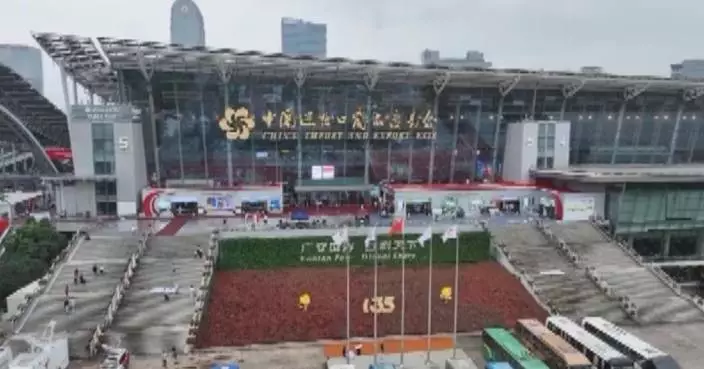Sri Lankan Prime Minister Dinesh Gunawardena has dismissed claims that the South Asian country is falling into a so-called "debt trap" in response to concerns raised by Western media regarding cooperation with China.
Gunawardena paid a visit to China in late March. In an interview with China Media Group (CMG) in Shanghai during the visit, Gunawardena emphasized that Sri Lanka is capable of weighing the costs and benefits of its international agreements for itself.
"Sri Lanka, as I mentioned all these minutes in your interview, has always respected, trusted and (been) committed for development with China. China's help and assistance has been for our development. When we were in difficulty, China helped us. When our territorial integrity was being threatened, our unitary state was about to be ripped apart, China stood by Sri Lanka in order to overcome terrorism and to hold back the unitary state for which all our countrymen today. I appreciate it," he said.
In recent years, as Sri Lanka's strategic partner, China has extended its support for the development of major projects including the Hambantota International Port and the Colombo Port City in Sri Lanka under the Belt and Road Initiative, which has thus helped develop Sri Lanka's economy and improve the people's livelihood.
Over the years, China has become Sri Lanka's biggest aid donor, source of foreign investment, trade partner and source of foreign tourists.

Sri Lankan prime minister dismisses claims of debt trap in cooperation with China

Sri Lankan prime minister dismisses claims of debt trap in cooperation with China
The year of 2024 marks the 75th anniversary of diplomatic relations between China and Hungary, with Shanghai highlighting the significant impact of Hungarian culture, exemplified by poet Sandor Petofi and architect Laszlo Hudec.
A special program on China Global Television Network (CGTN) that aired on Thursday opened with a reflection on the powerful words of Sandor Petofi, a revered 19th-century Hungarian poet.
His lines "Liberty and love. These two I must have. For my love, I'll sacrifice my life. For liberty, I'll sacrifice my love," resonated with Chinese audiences, largely due to the translation efforts of Lu Xun, a pivotal figure in modern Chinese literature.
In 2007, to commemorate this deep historical connection, the Hungarian government donated a sculpture of Sandor Petofi to Shanghai's Lu Xun Park.
This statue not only symbolizes the enduring friendship between the two countries but also highlights the cultural bridges built by figures like Lu Xun, who introduced Petofi's profound words to Chinese readers.
Another notable Hungarian, the Slovak-Hungarian architect Laszlo Hudec, spent approximately three decades in Shanghai from 1918 onwards, leaving an indelible mark on the city's architectural landscape.
He designed over 60 buildings, significantly enriching Shanghai's skyline with a blend of European architectural styles.
Bence Lengyel, a Hungarian student pursuing his postgraduate degree in international relations at Renmin University of China in Beijing, outlined Hudec's architectural contributions.
"So, basically this Wukang Mansion is located in Shanghai's former French concession area. And this building was built in 1924, and it was celebrated for its unique Renaissance style. And here, we can see some pictures how does the building looks from the inside. Because now, it still operates as these apartments. So people are still living in this big building, so it is forbidden for visitors to enter. But thanks to these pictures, we can get a small insight how does this building look from the inside," Lengyel explained.
The journey through Hudec's legacy also includes the Grand Cinema, designed in 1933 and recognized as a pioneering example of Art Deco in China.
Lengyel shared a personal memory: "One of my highlights during my five years living in China was definitely when I have visited the Grand Theatre here in Shanghai with my friend. Because four years ago, when I was studying in Shanghai, I was studying Chinese and we went in to watch a movie in Shanghainese. So we came to this theater and right after the movie has ended, we got out of the theater and we saw that big plaque right next to the front door. And that was the time when we realized that this Grand Theater was also built by Hudec Laszlo."
Adjacent to the cinema stands the Park Hotel, another Hudec masterpiece, which was Shanghai's tallest building for over five decades.
"So basically, this Park Hotel is one of my favorites. And after reading so much about his journey from Hungary to becoming a well-celebrated architect in Shanghai, I think it's truly inspirational and I'm happy that I can share the same cultural heritage as him. And I think his own ideas and designs [are] what made him so famous in Shanghai," Lengyel reflected.
Decades of cultural exchanges between China and Hungary have significantly enriched Shanghai's architectural and cultural landscape, deepening the understanding and appreciation of Hungary's contributions to China.

China celebrates Hungarian cultural legacy through poetry, architecture












